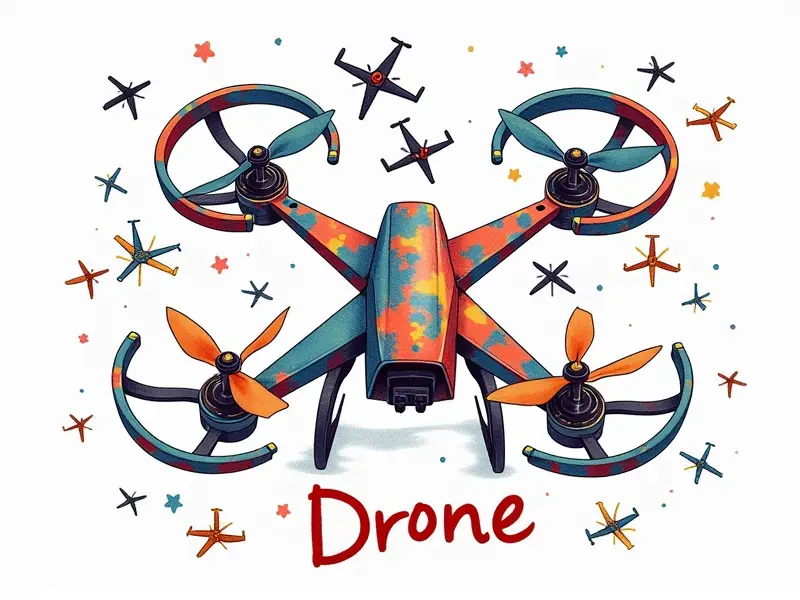My drone won't land properly

Troubleshooting Drone Landing Issues
If your drone is experiencing landing difficulties, it can be frustrating and potentially damaging. This article aims to provide you with a comprehensive guide on how to troubleshoot common issues that prevent your drone from landing properly.
Why My Drone Can't Land Properly
- Battery Level: Low battery levels can cause instability and affect the drone's ability to land smoothly.
- Wind Conditions: Strong winds or gusts can make it challenging for your drone to maintain control during landing.
- Sensor Malfunction: Faulty sensors, such as GPS or compass issues, can lead to inaccurate positioning and poor landings.
Fixing Common Drone Landing Problems
To address these common problems, follow the steps below:
- Check Battery Levels: Ensure your drone's battery is fully charged before attempting a landing. A low battery can cause erratic behavior and instability.
- Monitor Weather Conditions: Avoid flying in windy conditions or during rain to prevent issues with stability and control.
- Calibrate Sensors: Regularly calibrate your drone's sensors, especially GPS and compass, to ensure accurate positioning and smooth landings.
Techniques for Better Drone Landings
To improve the quality of your drone’s landings, consider these techniques:
- Gentle Approach: Slow down gradually as you approach the landing area to give your drone time to adjust and stabilize.
- Avoid Obstacles: Keep a clear path for your drone by ensuring there are no obstacles near the landing zone.
- Use Manual Control: Take control manually if you notice any issues during automatic descent, allowing you to guide it safely to the ground.
How to Ensure Smooth Drone Landings Every Time
To achieve consistent and smooth landings, follow these best practices:
- Pre-flight Checks: Conduct thorough pre-flight checks to ensure all systems are functioning correctly before takeoff.
- Landing Zone Preparation: Choose a flat, open area free from debris and obstacles for optimal landing conditions.
- Regular Maintenance: Keep your drone well-maintained with regular cleaning and part replacement to ensure peak performance.
Preventing Drone Crashes During Landings
Avoiding crashes during landings is crucial for the longevity of your drone. Here’s how you can prevent them:
- Monitor Battery Levels: Always keep an eye on battery levels and initiate a landing before they drop too low.
- Adjust Flight Path: If you notice any issues, adjust your flight path to avoid obstacles or unstable conditions.
- Use Emergency Stop: Familiarize yourself with the emergency stop function in case of unexpected situations during landing.
Adjusting Settings for Better Drone Landing Control
Tweaking your drone’s settings can significantly improve its performance during landings. Consider these adjustments:
- Sensitivity Adjustments: Modify the sensitivity of control inputs to better suit your flying style and landing requirements.
- PID Tuning: Fine-tune PID (Proportional-Integral-Derivative) settings for more precise altitude and position control during landings.
- Wind Compensation: Adjust wind compensation parameters to help your drone maintain stability in windy conditions.
Maintaining Stability in Drone Landings
To ensure stability, focus on the following aspects:
- Balanced Weight Distribution: Ensure that all components are securely attached and evenly distributed to prevent imbalance during flight.
- Regular Calibration: Regularly calibrate your drone’s sensors for optimal performance and stability.
- Smooth Descent: Descend smoothly without sudden movements, allowing the drone to maintain control throughout the landing process.
Essential Fixes for Drift During Drone Landings
Drift can be a significant issue during landings. Here’s how you can address it:
- GPS Calibration: Ensure your drone's GPS is properly calibrated to provide accurate positioning data.
- Magnetic Interference Check: Look for sources of magnetic interference that might affect the compass and recalibrate if necessary.
- Adjust Wind Settings: Modify wind settings in your drone’s software to account for drift caused by wind conditions.
Common Mistakes That Hinder Drone Landings
Avoid these common mistakes that can hinder smooth landings:
- Neglecting Pre-flight Checks: Skipping pre-flight checks can lead to undetected issues affecting landing performance.
- Flying in Unfavorable Conditions: Ignoring weather conditions and flying in windy or rainy environments can cause instability during landings.
- Lack of Maintenance: Failing to maintain your drone properly can result in mechanical issues that affect landing accuracy.
Overcoming Challenges of Proper Drone Landing
To overcome challenges and ensure proper drone landings, consider these strategies:
- Practice Regularly: The more you practice, the better you’ll become at managing your drone during various conditions.
- Leverage Technology: Utilize advanced features like automatic landing modes and obstacle avoidance systems to enhance safety.
- Seek Expert Advice: Consult with experienced pilots or manufacturers for guidance on optimizing your drone’s performance.
Conclusion
Maintaining proper drone landings is crucial not only for the safety of your equipment but also to ensure a positive flying experience. By addressing common issues, adjusting settings, and adopting best practices, you can significantly improve your drone's landing capabilities. Remember to stay vigilant about pre-flight preparations, monitor environmental conditions, and regularly maintain your drone to prevent potential problems.

